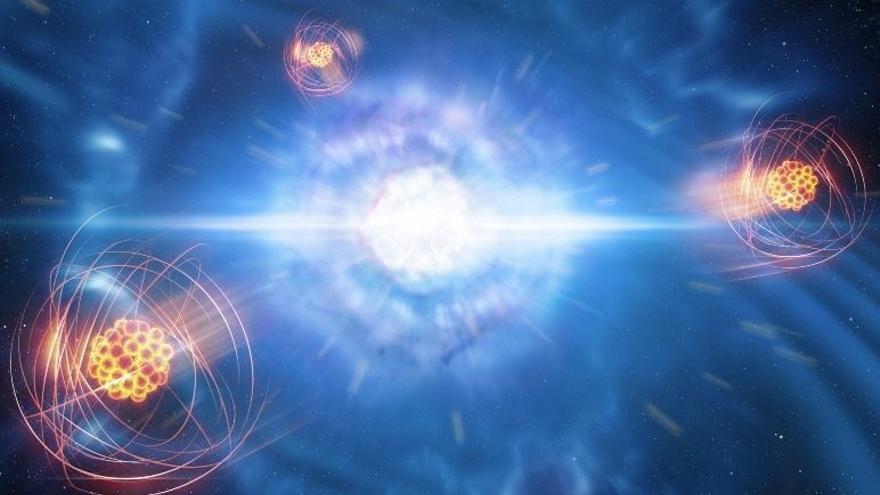Heavy elements produced in neutron star collisions can ‘surf’ on the shock waves of other supernovae through our galaxy all the way to Earth.
It is the conclusion of a sophisticated computer model of the journey of elements through space, developed by scientists from the University of Hertfordshire, UK, and the Konkoly-CSFK Observatory, Hungary.
stellar explosions
Many of the elements around us are produced in stellar explosions called supernovae or in violent collisions of extremely dense objects called neutron stars. One of the questions that intrigued scientists was how these heavy elements got to Earth and, in particular, how elements originating from different places appear to have reached our planet at the same time.
deep sea marinas
The mystery was first raised in 2021, when radioactive isotopes discovered inside rocks in the deep sea revealed a surprise to scientists studying their origin. The isotopes did not originate within our solar system, but in star explosions elsewhere in the galaxy. Some of the detected isotopes drew special attention from the research community, due to their very different places of production.
neutron stars
Specifically, the scientists found manganese-53 (associated with white dwarf explosions); iron-60 (produced in core-collapse supernovae); and plutonium-244 (which can normally only be produced by the merger of two extreme objects called neutron stars) settled in layers of similar depth in deep-sea rock samples.
heaven sent
To reach Earth, these isotopes would have rained down from the sky sometime in the last two million years. Since deep-sea sediments accumulate layer by layer over time to form rock, the researchers were very surprised that these three isotopes, from different types of stellar explosions, were found in similarly deep rock layers. . Finding them at similar depths means they must have arrived on Earth together, even though their places of origin are so different.
To find out how these isotopes came to Earth together, a team led by Dr Benjamin Wehmeyer from the University of Hertfordshire and the CSFK produced computer models to simulate how isotopes travel from their galactic production sites through space.
The study found that ejected content from various astrophysical locations—from colliding neutron stars to exploding white dwarfs—is pushed into the galaxy by shock waves from collapsing supernovae of the nucleus, much more frequent. These supernovae are explosions from the cores of massive stars, much more frequent than the explosions caused by the merger of two neutron stars or the explosions of white dwarfs.
Wehmeyer and his team observed that, once produced, the isotopes can «surf» on the shock waves of these supernovae. This means that isotopes produced in very different places can end up traveling together at the edges of the shock waves from core-collapse supernova explosions. Some of this entrained material ends up on Earth, which may explain why the isotopes were found together in similar layers of deep-sea rock.
how atoms move
«Our colleagues have dug up rock samples from the ocean floor, dissolved them, fed them into an accelerator, and examined the changes in their composition layer by layer. Using our computer models, we have been able to interpret their data to find out exactly how they move. atoms throughout the galaxy,» Wehmeyer explained in a statement.
Related news
«This is a very important breakthrough, as it not only shows us how isotopes spread through the galaxy, but also how they become abundant on exoplanets, that is, on planets beyond our solar system. This is very exciting, «Since isotopic abundances are a determining factor in knowing whether an exoplanet is capable of hosting liquid water, which is key to life. In the future, this could help identify regions of our galaxy where we can find habitable exoplanets,» he added.
The work is published in The Astrophysical Journal.

